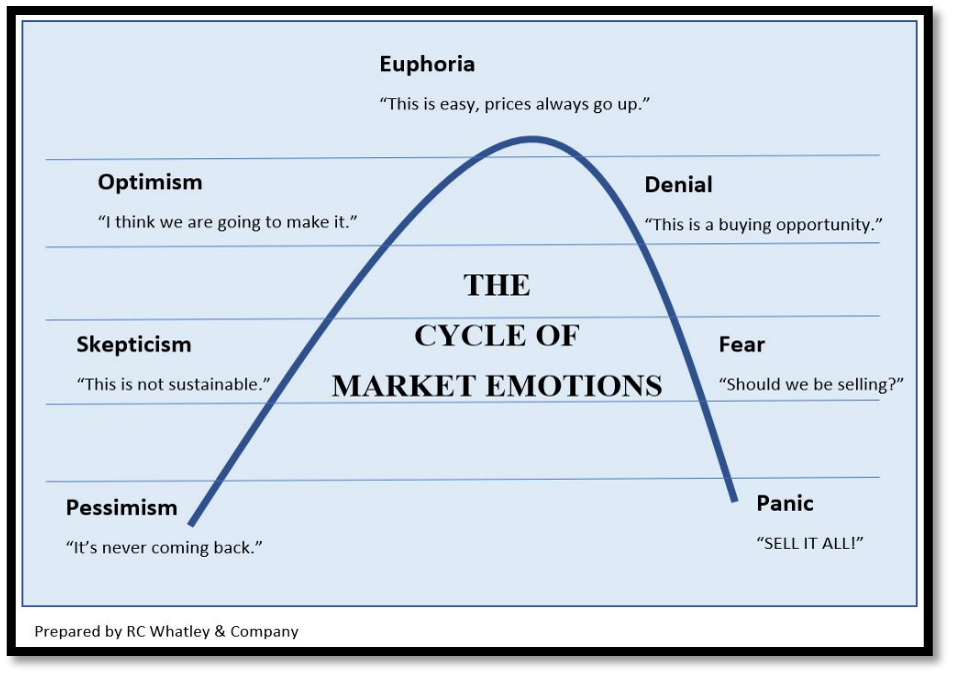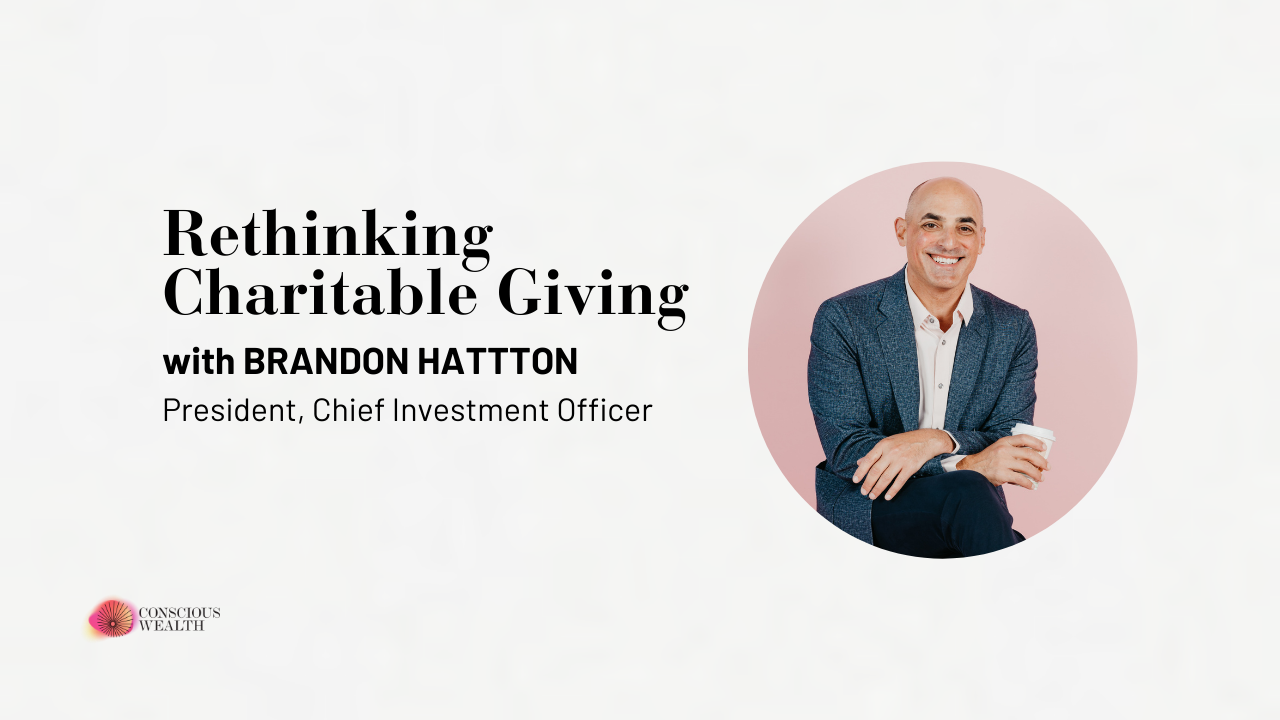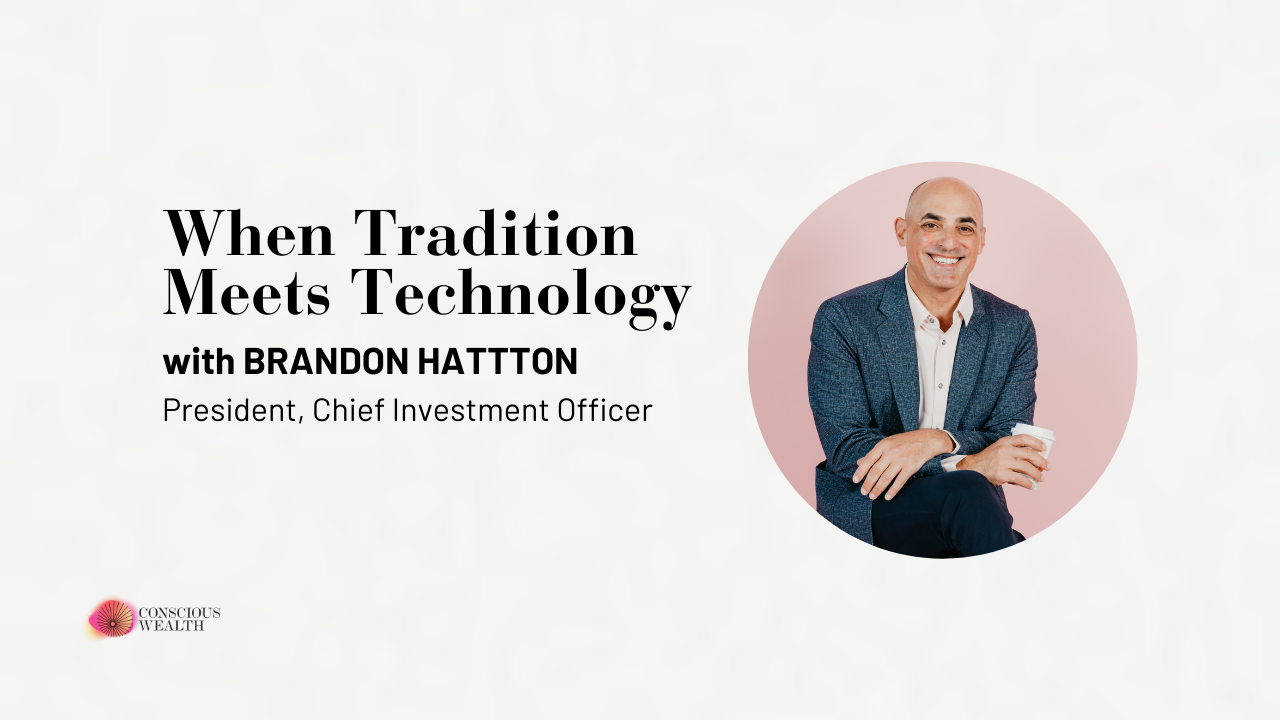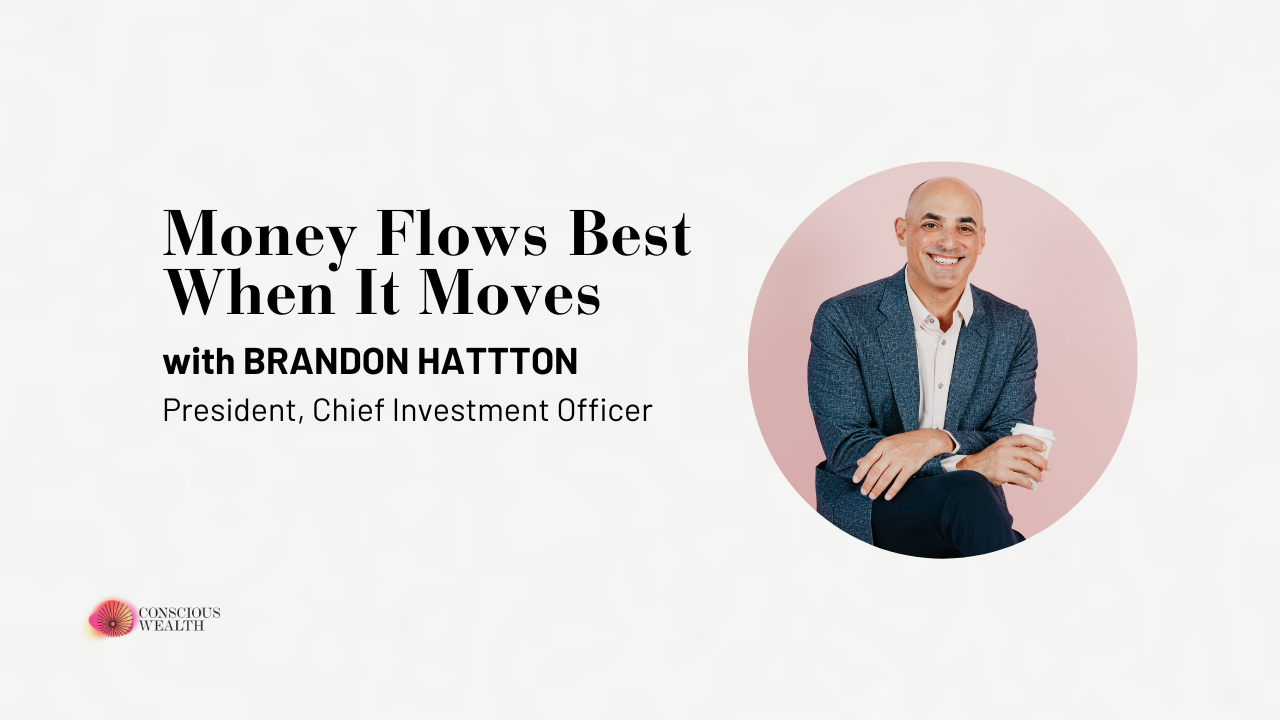Market Emotions
March 2025
Letter to Our Clients
Imagine a five-year period where these are successive market drawdowns:
-34%
-5%
-25%
-10%
-9%
Looks pretty bad, right?
Would you be surprised to know that we experienced these market conditions over the last five years, and except for 2022, annual returns were far from negative during this period. In fact, during this time, markets averaged double-digit annual returns.
Volatility Is Part of The Journey
Market declines are uncomfortable, but they are necessary and temporary. Do you remember how you felt during the COVID correction of 2020? Were you saying,“GET ME OUT!” or “What should we buy?”
If something can be up dramatically in one day, one month, or one year, then it has the potential to be down the same amount or more over the same time period.
Friends and clients routinely ask me: “What should I buy now?”
I always say: “One word. Plastics.”
Then they press me and say, seriously: “What is this market going to do this year?”
My answer: “I have no idea.”
That said, since the advent of public investment markets in the early 1600s, they have created extraordinary compound returns over longer periods of time.
Fight or Flight
Our biggest obstacle to long-term investment success is in our own DNA. The well documented fight-or-flight response is a natural reaction that has been attributed to our survival as a species. It most certainly helped our ancestors survive saber-toothed tigers and dire wolves. When markets fall, we may equate a bear market to a bear attack making our instincts scream “RUN!” At market highs, our instincts whisper “I want more.” We desperately want to buy high and sell low. All this creates a scenario where we want more risk at market highs and no risk at market lows.
Fortunately, not all corrections are an existential threat. In fact, most are not – see annual market dips above. So, the fight or flight instinct actually works against us in investing. Knowing this can help us see more clearly when markets decline.
The Cycle of Market Emotions
Think about what causes a stock price to go up or down. Corporate profits, the Federal Reserve, China, tariffs, oil prices, unemployment numbers, and retail sales are all factors that can affect stock prices and markets. Headlines often influence fear and greed, but the fundamental question is always the same for any item purchased or sold: Are there more buyers (demand) or more sellers(supply)?
Stocks and markets reach highs—only identifiable after the fact—when demand is highest and supply is lowest. More people want to buy (increasing demand)while fewer people want to sell (less supply). This is driven by the same euphoric emotion: “It’s going higher, I want to buy more,” and “It’s going higher, I don’t want to sell now.”
Then, when the market is saturated with buyers, volume drops and any bad news that creates a sudden increase in sellers causes prices to fall. Now, we have more sellers (supply) and fewer buyers (demand).
This scenario often corrects itself quickly, that is the nature of an open market, but occasionally fear and panic drive prices to surprising lows. At that point, our amygdala (the brain’s emotional center) sends a distress signal to the hypothalamus, activating the HPA axis (Hypothalamic-Pituitary-Adrenalaxis). This triggers the release of cortisol (the stress hormone), which, along with a surge of adrenaline, heightens senses and our internal controls scream: “RUN!”

I keep the Cycle of Market Emotions chart on my desk as a reminder to eliminate emotions from our investment process.
It illustrates how euphoria often precedes major corrections, while panic and fear mark opportunities for those who remain disciplined.
As always. Please let me know if you have any questions about supply and demand or anything else on your mind.
Brandon Hatton
President, Chief Investment Officer
Subscribe
March 2025
Letter to Our Clients
Imagine a five-year period where these are successive market drawdowns:
-34%
-5%
-25%
-10%
-9%
Looks pretty bad, right?
Would you be surprised to know that we experienced these market conditions over the last five years, and except for 2022, annual returns were far from negative during this period. In fact, during this time, markets averaged double-digit annual returns.
Volatility Is Part of The Journey
Market declines are uncomfortable, but they are necessary and temporary. Do you remember how you felt during the COVID correction of 2020? Were you saying,“GET ME OUT!” or “What should we buy?”
If something can be up dramatically in one day, one month, or one year, then it has the potential to be down the same amount or more over the same time period.
Friends and clients routinely ask me: “What should I buy now?”
I always say: “One word. Plastics.”
Then they press me and say, seriously: “What is this market going to do this year?”
My answer: “I have no idea.”
That said, since the advent of public investment markets in the early 1600s, they have created extraordinary compound returns over longer periods of time.
Fight or Flight
Our biggest obstacle to long-term investment success is in our own DNA. The well documented fight-or-flight response is a natural reaction that has been attributed to our survival as a species. It most certainly helped our ancestors survive saber-toothed tigers and dire wolves. When markets fall, we may equate a bear market to a bear attack making our instincts scream “RUN!” At market highs, our instincts whisper “I want more.” We desperately want to buy high and sell low. All this creates a scenario where we want more risk at market highs and no risk at market lows.
Fortunately, not all corrections are an existential threat. In fact, most are not – see annual market dips above. So, the fight or flight instinct actually works against us in investing. Knowing this can help us see more clearly when markets decline.
The Cycle of Market Emotions
Think about what causes a stock price to go up or down. Corporate profits, the Federal Reserve, China, tariffs, oil prices, unemployment numbers, and retail sales are all factors that can affect stock prices and markets. Headlines often influence fear and greed, but the fundamental question is always the same for any item purchased or sold: Are there more buyers (demand) or more sellers(supply)?
Stocks and markets reach highs—only identifiable after the fact—when demand is highest and supply is lowest. More people want to buy (increasing demand)while fewer people want to sell (less supply). This is driven by the same euphoric emotion: “It’s going higher, I want to buy more,” and “It’s going higher, I don’t want to sell now.”
Then, when the market is saturated with buyers, volume drops and any bad news that creates a sudden increase in sellers causes prices to fall. Now, we have more sellers (supply) and fewer buyers (demand).
This scenario often corrects itself quickly, that is the nature of an open market, but occasionally fear and panic drive prices to surprising lows. At that point, our amygdala (the brain’s emotional center) sends a distress signal to the hypothalamus, activating the HPA axis (Hypothalamic-Pituitary-Adrenalaxis). This triggers the release of cortisol (the stress hormone), which, along with a surge of adrenaline, heightens senses and our internal controls scream: “RUN!”

I keep the Cycle of Market Emotions chart on my desk as a reminder to eliminate emotions from our investment process.
It illustrates how euphoria often precedes major corrections, while panic and fear mark opportunities for those who remain disciplined.
As always. Please let me know if you have any questions about supply and demand or anything else on your mind.
Brandon Hatton
President, Chief Investment Officer





